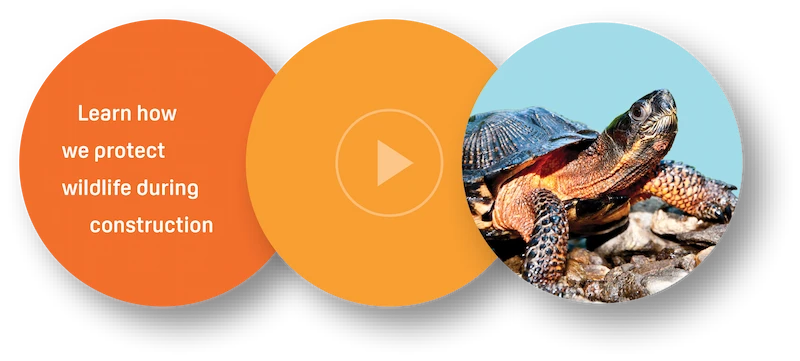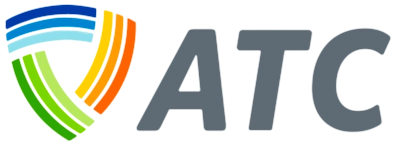Living/Working Near Powerlines
ATC owns and operates over 10,000 miles of power lines in the upper Midwest, providing power to more than 5 million customers. We know that safety and electric reliability are important to you. By keeping the utility corridor free of incompatible structures and vegetation and working safely around power lines, we can all help ensure the safety and reliability of the regional electric grid.
Everything you need to know about...
ATC’s facilities are in both urban and rural areas. In many cases, ATC does not own the land on which the facilities are located but has easement rights for the specific purpose of constructing, operating and maintaining those facilities. Additionally, though easement rights may vary from property to property, they typically limit the use of the land and allow ATC to remove trees, incompatible vegetation and other obstacles that could interfere with the operation and maintenance of the electric grid. Easements are legal documents that are commonly found in the property owner’s title to their property. As the property is transferred and sold to new owners, the easement rights remain in place.
ATC real estate and engineering staff are available to assist the public with questions about living and conducting business near our facilities.
Managing the growth of trees and other vegetation near power lines is important to help ensure public safety and electric system reliability. Vegetation that grows too close to power lines can cause a dangerous situation. Electricity can arc from the lines to a tree branch, igniting a fire or causing an outage. ATC performs routine vegetation management on its over 10,000 miles of power lines in five-to-10-year cycles. Only qualified personnel should trim or cut trees near power lines.
Trees are permitted outside of the utility corridor, as long as they do not encroach on the utility corridor area. Several studies have shown that planting the right tree in the right place can provide energy-saving benefits by cutting energy used by heating and air conditioning units. The shade provided by trees reduces air temperature, decreases the amount of radiant energy absorbed and stored by buildings and paved surfaces and also cut the wind, slowing the infiltration of outside air into climate-controlled structures. More information about energy-saving trees can be found on the Arbor Day Foundation website.
Consult an ATC expert before planting near power line easement areas. Call us at (866) 899-3204. ATC’s Grow Smart program helps property owners and communities identify low-growing, beautiful, native vegetation that can be planted under or near power line corridors.
In 2023, ATC joined a new nationwide effort to restore and increase the monarch butterfly population. ATC was one of 45 energy companies and transportation companies that helped develop the voluntary conservation agreement. Organizations enrolling in the effort commit to implementing conservation measures that address the key threats under their control and promote diverse breeding and foraging habitat for the monarch butterfly. These measures include activities ATC has undertaken for years like seeding and planting with pollinator mixes, setting aside undisturbed areas for habitat, targeted herbicide application, and conservation mowing activities to minimize impacts to the monarch butterfly.
Prior to making any changes to the topography/grade or constructing any improvements within the utility corridor (also known as an encroachment), property owners should contact ATC as sometimes written permission is required. Some examples of encroachments include sheds, fences, landscaping and driveways. Property owners should contact ATC even if they have an approved permit from the city or county, as failure to obtain prior approval from ATC could result in the removal of the encroachment at the property owner’s expense
You can learn more about minimum design, construction and safety requirements for construction activities performed near ATC overhead and underground electric facilities and/or within ATC utility corridor by property owners by clicking on our Guide to developments within ATC utility corridors below.
Encroachment requests and associated documentation must be submitted to ATC in writing. ATC will respond to encroachment requests in approximately 20 business days after receiving the request. ATC will evaluate requests to:
- Determine whether the request is permitted under the terms of the easement;
- Ensure the proposed request would not violate electrical code compliance;
- Ensure access to and the safety and integrity of the ATC’s facilities.
Click here to download a printable encroachment request form that can be filled out and mailed or faxed or click here to open a fillable PDF that can completed, saved and emailed. If you have any questions, please contact realestate@atcllc.com.
ATC recognizes that non-emergency utility vegetation management work such as pruning and removals, mowing, herbicide applications and inspections may cause concerns for property owners in ATC’s Illinois service area. Under Illinois Commerce Commission requirements, ATC has developed the following dispute resolution process to allow landowners to discuss their concerns and/or to appeal the work plan.
Contact ATC at (866) 899-3204.
If work is scheduled on your property and you have objections or concerns, call ATC and ask to speak to an ATC representative who can discuss your vegetation management concerns with you. The representative will review your dispute and respond in a timely manner. You are also welcome to call ATC after the vegetation work is completed on your property to provide feedback or share concerns. ATC also can be reached by email at localrelations@atcllc.com.
An ATC representative will respond to your concerns.
Your concerns related to the scheduled vegetation management work will be discussed with you and evaluated to explore possible resolutions. The ATC representative will visit your property if necessary to review the planned work and the specific issues related to your property. The ATC representative may:
- Authorize a grace period to give a landowner time to move incompatible vegetation to a location outside the easement strip. The landowner needs to sign a tree relocation agreement and is responsible for any costs associated with relocating vegetation.
- Consider an exception to the easement rights for allowable compatible vegetation that meets certain criteria.
- Discuss options for site clean-up and restoration if applicable
Your dispute or objection may also be referred to an internal management team for further review and resolution. For more information, please review ATC’s Dispute Resolution Disclosure.
The Illinois Commerce Commission may review your dispute.
In situations where a landowner is not satisfied with ATC’s response, the Consumer Affairs Office of the Illinois Commerce Commission can be reached at (800) 524-0795 or by filing a complaint online.
Upcoming work
A map of ATC’s planned vegetation management work for July 2024 can be viewed here.
ATC works carefully and thoughtfully to balance regulatory requirements, control costs, serve our customers and reduce our environmental impacts. We strive to reduce the impact that building, operating and maintaining our facilities has on the environment and pursue opportunities to support sustainable, healthy ecosystems. While planning construction projects, ATC conducts habitat assessments to identify threatened or endangered species habitat.

Avoid underground hazards
Contact your state’s underground utility locating system by calling 811 or visiting your state 811 center’s website at least three full business days before digging to have underground utility lines marked. It is free and required by law.
Work safely around power lines
Getting too close to a high-voltage electric line with your body, equipment or tools can result in severe injury or even death. Working near power lines carries risk whether you operate heavy equipment, trim or cut trees, or use ladders or handheld tools. Work safely to protect yourself, your crew and the public.
